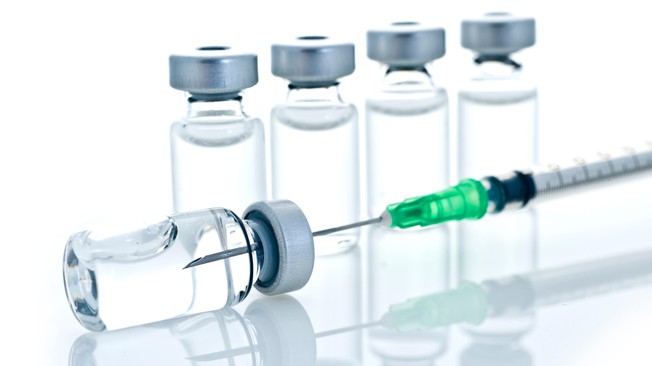Lausanne: Several simple and
inexpensive techniques make it possible to store antiviral-vaccines at
room temperature for several months. This discovery by EPFL researchers
and partners could make a difference in inaccessible areas and
developing countries where maintaining cold-chain transportation of
vaccines is complicated and expensive. Shipping vaccines in an
unbroken temperature-controlled supply chain (a “cold chain”) all the
way to recipients is a major logistical and financial challenge in
remote areas and developing countries. According to Doctors Without
Borders, the need to keep vaccines within a temperature range of 2-8°C
is one of the main factors behind low immunization-coverage rates.
Researchers
at EPFL’s Supramolecular Nanomaterials and Interfaces Laboratory
(SUNMIL), in collaboration with scientists in Milan, Turin, Leiden, and
Oregon, have come up with three simple and inexpensive vaccine additives
to get around this obstacle. Using minute quantities of nanoparticles,
or FDA-approved polymer (polyethylene glycol), or higher amounts of
sucrose, they were able to stabilize vaccines at room temperature for
several weeks or, in some cases, months. Their approach, which was
successfully tested on a vaccine for rodents, is published in Nature Communications.
Nanoparticles, polymers and sugar
The study addressed viral-vector vaccines, the most common type of
vaccine, which normally only last for a few days at room temperature. At
that point, the viral components of the vaccines lose their structural
integrity. “These components fluctuate by their very nature,” says
Stellacci, head of SUNMIL - Constellium Chair. “They are combined in a
stable form, and the low temperature maintains that balance. But the
thermally induced fluctuations eventually lead to a loss of integrity of
the viral vector.” The scientists’ approach, which consists of
stabilizing the vaccines against such fluctuations through simple
biocompatible additives, has delivered excellent results.
In their
first approach, osmotic pressure is applied on the inactivated viruses
(the main component of the vaccine) using a cloud of negatively charged
nanoparticles. The virus is already subject to an outward osmotic
pressure due to its genetic material (RNA or DNA), which has a high
negative charge and is held inside the virus. The nanoparticles form a
cloud of negatively charged objects that cannot enter the virus, thus
generating counter-osmotic pressure that keeps the virus intact. “With
this method, infectivity for a virus reached a half-life of 20 days,”
says Stellacci.
The second approach consists in stiffening the
virus’s capsid, which envelops the inactivated virus, by adding
polymers. This additive mainly stabilizes the virus by slowing its
oscillations by changing the stiffness of the capsid. As a result, the
vaccine remained fully intact for 20 days with an estimated half-life of
~70 days.
Finally, adding sucrose, a common sugar, to the vaccine
makes the environment more viscous and slows down fluctuations. “It’s a
little like adding honey, where all motion is slowed down,” says
Stellacci. With this third approach, 85% of the vaccine's properties
were intact after 70 days.
Tests on the Chikungunya virus
Using these results, the researchers applied their methods to a vaccine
that is currently in development. They were able to stabilize a vaccine
against Chikungunya, a tropical virus, for 10 days, and then
successfully inoculated mice with it. “The next step will be to run more
extensive tests on specific vaccines, possibly combining the three
different approaches.”
Cheaper access
This
study could really impact the effort to increase immunization coverage.
Currently, in areas where electricity and refrigeration are limited,
vaccines are moved from one refrigerated space to the next and then
delivered to recipients in coolers. This complicated process accounts
for nearly 80% of the cost of vaccination programs. And that, up until
now, has been a significant impediment.
Source:
M. Pelliccia, P. Andreozzi, J. Paulose, M. D’Alicarnasso, V. Cagno, M.
Donalisio, A. Civra, R. M. Broeckel, N. Haese, P. Jacob Silva, R P.
Carney, V. Marjoma, D. N. Streblow, D. Lembo, F. Stellacci, V. Vitelli
& S. Krol.Additives to improve thermal stability of adenoviruses from hours to months: implications for vaccine storage.Nature Communications
